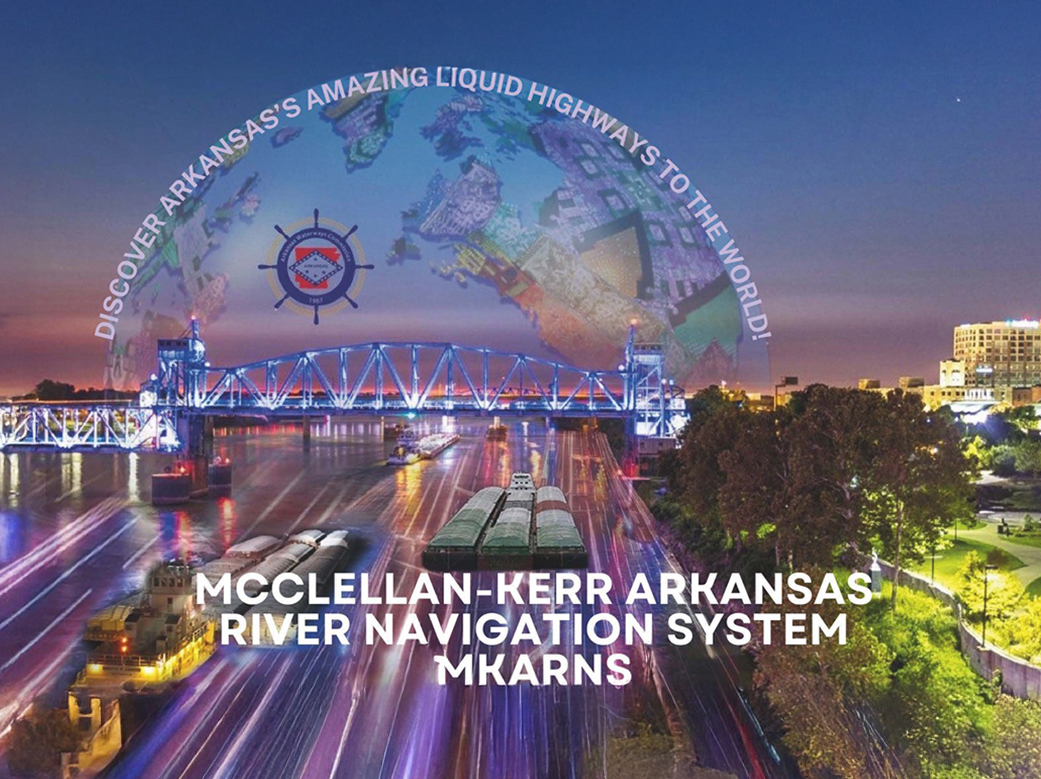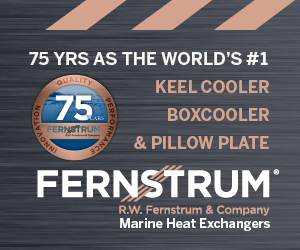With a seven-member board appointed by the governor, the Arkansas Waterways Commission helps develop, promote and protect the state’s five navigable rivers: the McClellan-Kerr Arkansas River Navigation System (MKARNS), the Mississippi, the Ouachita, the Red and the White.
Marty Shell, commission chairman, calls them Arkansas’ “liquid highway.”

When people think about states with major waterborne access, Arkansas might not come immediately to mind, but Shell points out that every one of the state’s 75 counties is within 70 miles of a navigable river. Additionally, of the 445 navigable miles of the MKARNS, 308 miles are within the borders of Arkansas. That reach of the river moved roughly 12.5 million tons of cargo last year.
“Arkansas is a great place to do business in, and we want to use our liquid highway to retain and to create new job opportunities in the state,” Shell said.
The commission’s board is normally led by the Arkansas waterways director, but that position remains open since the resignation of former director Cassandra Caldwell last year. Caldwell has gone on to serve as government affairs manager of the Mississippi River and Tributaries region at American Cruise Lines.
The director is responsible for promoting the state’s three public ports on the MKARNS, along with private ports and terminals.
The state has made major efforts to invest in its ports, Shell said.
An ad valorem tax on towboats and barges goes directly to the state, which administers a grant program for public ports and other public entities for infrastructure investment. Through that program, the Port of Pine Bluff received $1 million to reinvest in its dock for the first time since it was established in the 1960s, Shell said. The Port of Little Rock received $500,000 for fleeting and mooring cell rehabilitation. The Port of Fort Smith received $500,000 for a new, 30,000-square-foot warehouse.
The grant program helps to show that Arkansas is serious about investing in its river-based infrastructure, Shell said.
“That is the goal,” he said. “To put monies back into facilities to make them more state-of-the-art, more valuable and to increase tonnage on this system.”
Priorities for the commission include supporting the Three Rivers Project and the deepening of the MKARNS main channel to 12 feet, adding to and improving the tow haulage system on the river’s locks and dams and investing in what Shell called a critical maintenance backlog.
Improving, Maintaining Navigability
One regional project underway is the Three Rivers Project, which seeks to add dikes and other control structures to the first 10 miles of a canal between the White River and Mississippi River. During high-water conditions, both the White and the nearby MKARNS were in danger of shifting courses to bypass the canal, which would have disrupted the system’s navigability.
A combination of rock and concrete structures are being installed to help prevent erosion.
“They’ve had great weather and great success, and they’re ahead of schedule,” Shell said.
The project should be complete in 2027, Shell said, adding, “We are leaving it better for the next generation.”
A project that has been approved but that needs additional funding is one that would deepen the MKARNS to 12 feet in the main channel. In Arkansas, 95 percent of the river is already at least that deep, Shell said, but three areas require deepening. Arkansas is working in concert with the state of Oklahoma, which has more extensive deepening needs, especially between the ports of Muskogee and Catoosa, near Tulsa, the last navigable reach of the system.
To prepare for the deepening, the Corps of Engineers has added dikes and weirs to help with self-scouring.
“I can tell you that we’re moving in the right direction,” Shell said. “If you had an asphalt highway that was 95 percent complete, you’d be driving on it. We have a liquid highway that is 95 percent complete, and we need to start using it. We’re working on it. It’s just nothing moves quickly in the federal government.”
Having the 12-foot channel is essential for the MKARNS to compete for business with other states that already have a 12-foot channel, he said.
The state of Arkansas has 13 locks and dams, with 18 on the MKARNS system as a whole. All of them are 50 years old or older, Shell said. Because of their limited size, it is common for tows to be separated into two cuts of no more than six barges at a time to “double lock” through them.
Some of the Arkansas locks have a tow haulage system, where equipment is hooked onto the first cut of barges, hauling them through the lock, while the towboat stays with the second cut. This typically cuts the transit time of a tow through the lock from three to four hours to about an hour and a half. Oklahoma doesn’t have such a system, however, Shell said, and the systems in Arkansas need to be modernized and unified so that, if equipment breaks at one lock, repairs are easily available.
“These things are so old that they don’t even make parts for them anymore,” Shell said. “They have outlived their life expectancy, and it’s time to reinvest.”
Like much of the inland waterway system, and even blue-water facilities, infrastructure maintenance is long overdue at many of Arkansas’ locks and dams, Shell said.
“They’re 50 years old,” he said. “They’ve been through floods. They’ve been through all sorts of things.”
Unified Approach
Shell said the commission is working closely with state and federal legislators to make sure they understand the importance of maintaining waterborne commerce.
“I do believe the state of Arkansas sits in a great position because we move a lot of aggregate farm products out of our state that allow our farmers to be able to get a lot of their products to market,” he said.
To accomplish its priorities, Shell said it is important that the commission work closely with its partners, including neighbors in Kansas, a major grain point of origin, and Oklahoma. The Arkansas-Oklahoma Port Operators Association is another partner. Shell said the groups work together to speak with one unified voice, especially when it comes to matters such as advocating for more funding for the Corps of Engineers and attention for regionally important projects.
“We are competitors, but we’re trying to grow the pie instead of trying to split the pie,” he said.
It’s also important that the groups work together to try to bring more attention to the advantages of shipping commerce using navigable waterways.
A 2024 update to the MKARNS Economic Impact Study showed that to transport the tonnage the MKARNS does annually it would take more than 380,000 trucks or 99,000 railcars. Major commodities shipped on the MKARNS include sand, gravel and rock; food and food products; and chemical fertilizers.
“Arkansas is ready to be one of the premiere states for waterborne transportation, along with our partners in Oklahoma,” Shell said. “We have a system we do not publicize well enough to let people know the MKARNS is one of the great systems in the nation. We are open for business.”




